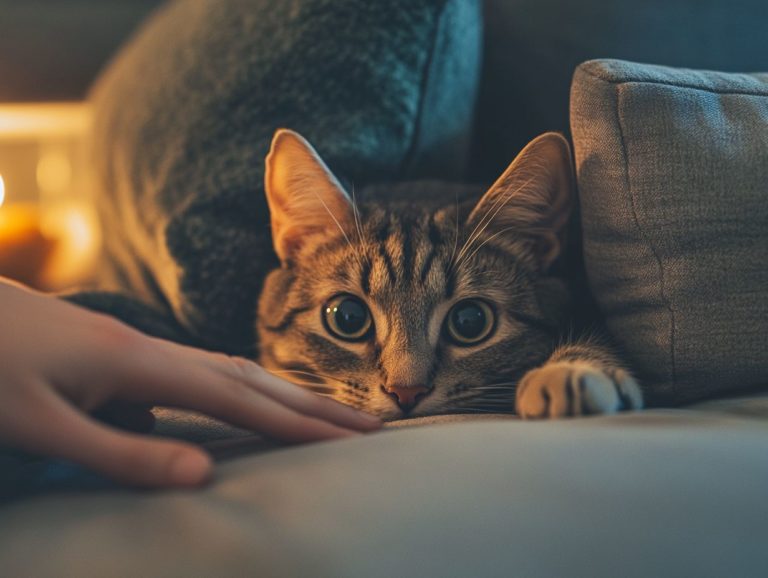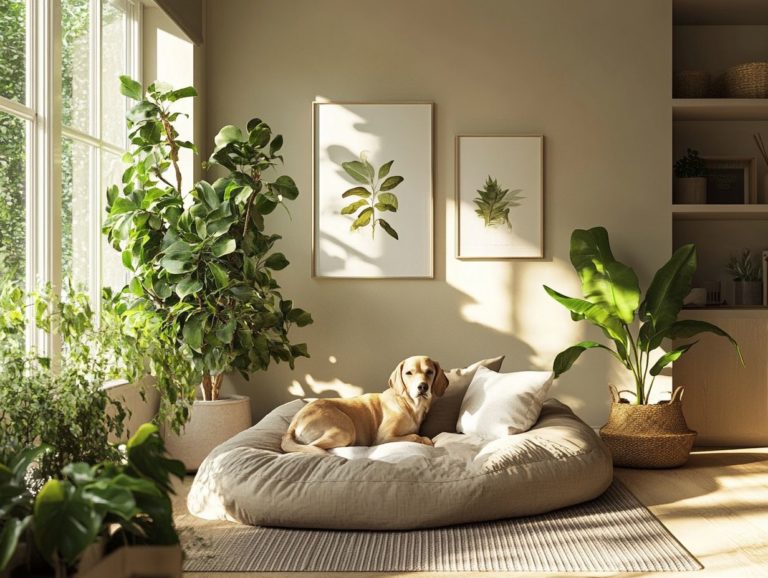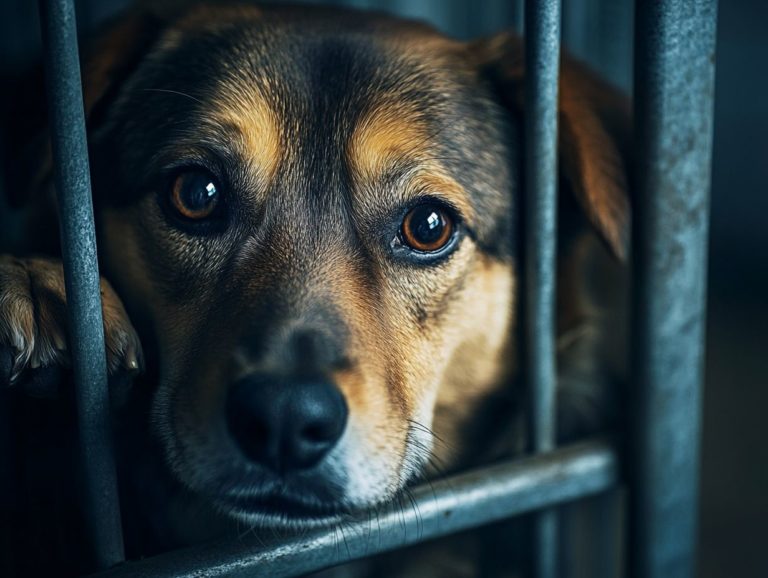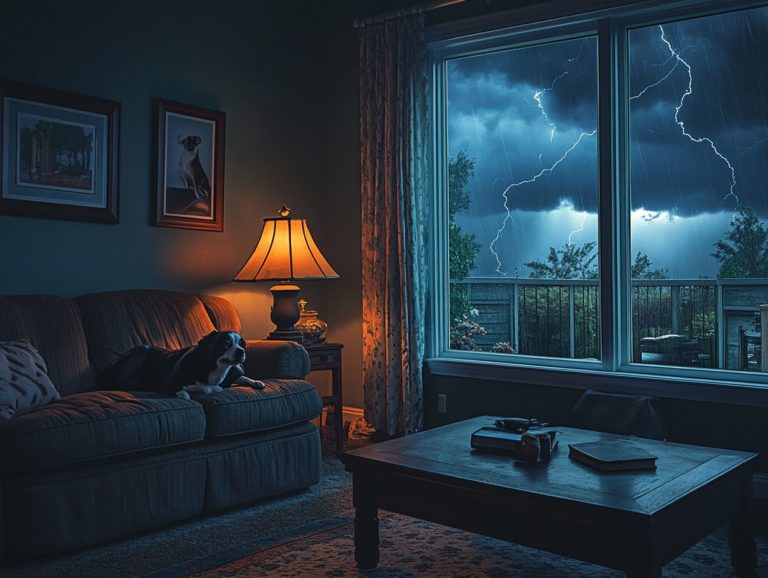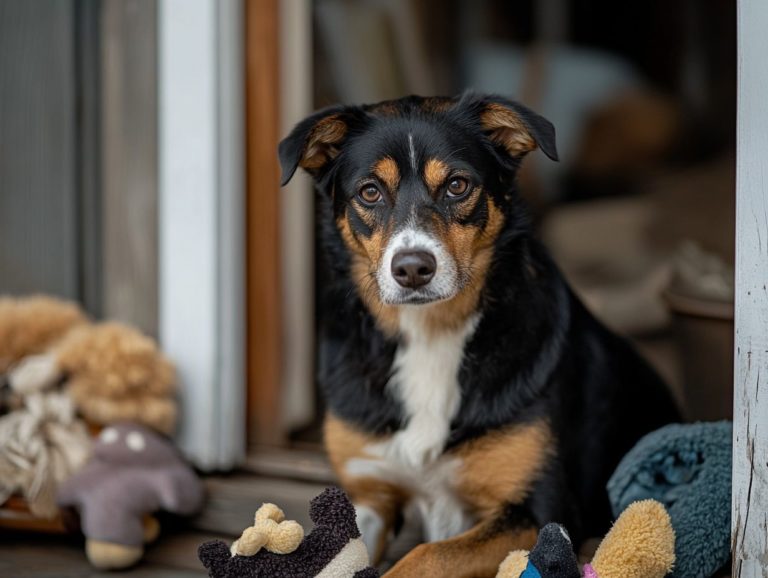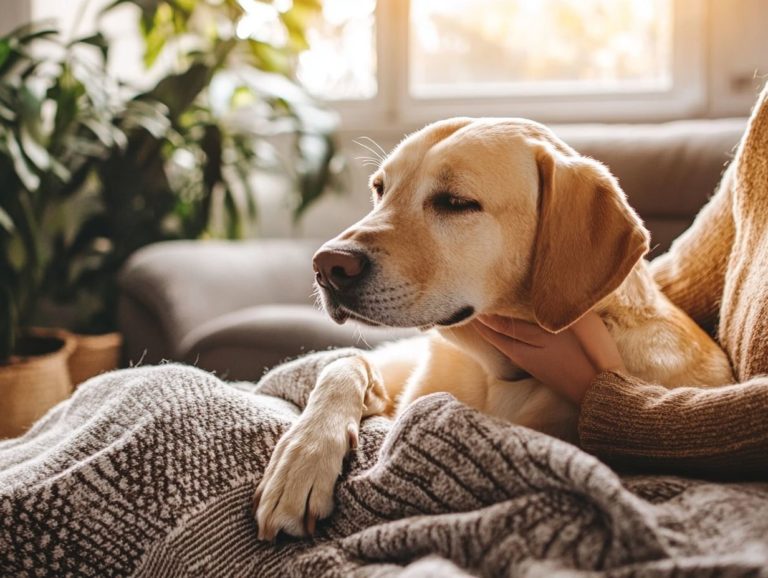Understanding the Role of Routine in Pet Anxiety Management
Pet anxiety is a major challenge for both pets and their owners. Understanding pet anxiety and its symptoms is the first step toward relief.
Creating a consistent routine can greatly reduce your pet’s anxiety. This means implementing practical tips to provide a reassuring structure.
We’ll explore effective techniques for managing anxiety. You’ll learn to spot signs that indicate when to seek professional help and how to create a calmer environment for your furry friend.
Contents
- Key Takeaways:
- What is Pet Anxiety?
- The Importance of Routine for Pet Anxiety Management
- Establishing a Routine for Your Pet
- Other Strategies for Managing Pet Anxiety
- When to Seek Professional Help
- Frequently Asked Questions
- What is the role of routine in pet anxiety management?
- How does establishing a routine help in managing pet anxiety and promote mental well-being?
- Can a routine be helpful for all types of pets with anxiety, including puppies?
- What are some examples of routines that can help manage pet anxiety and enhance playtime benefits?
- Why is sticking to a routine crucial for your pet s peace of mind?
- Can a routine be combined with other anxiety management techniques for pets, such as those offered at The Ark Pet Spa and Hotel?
Key Takeaways:
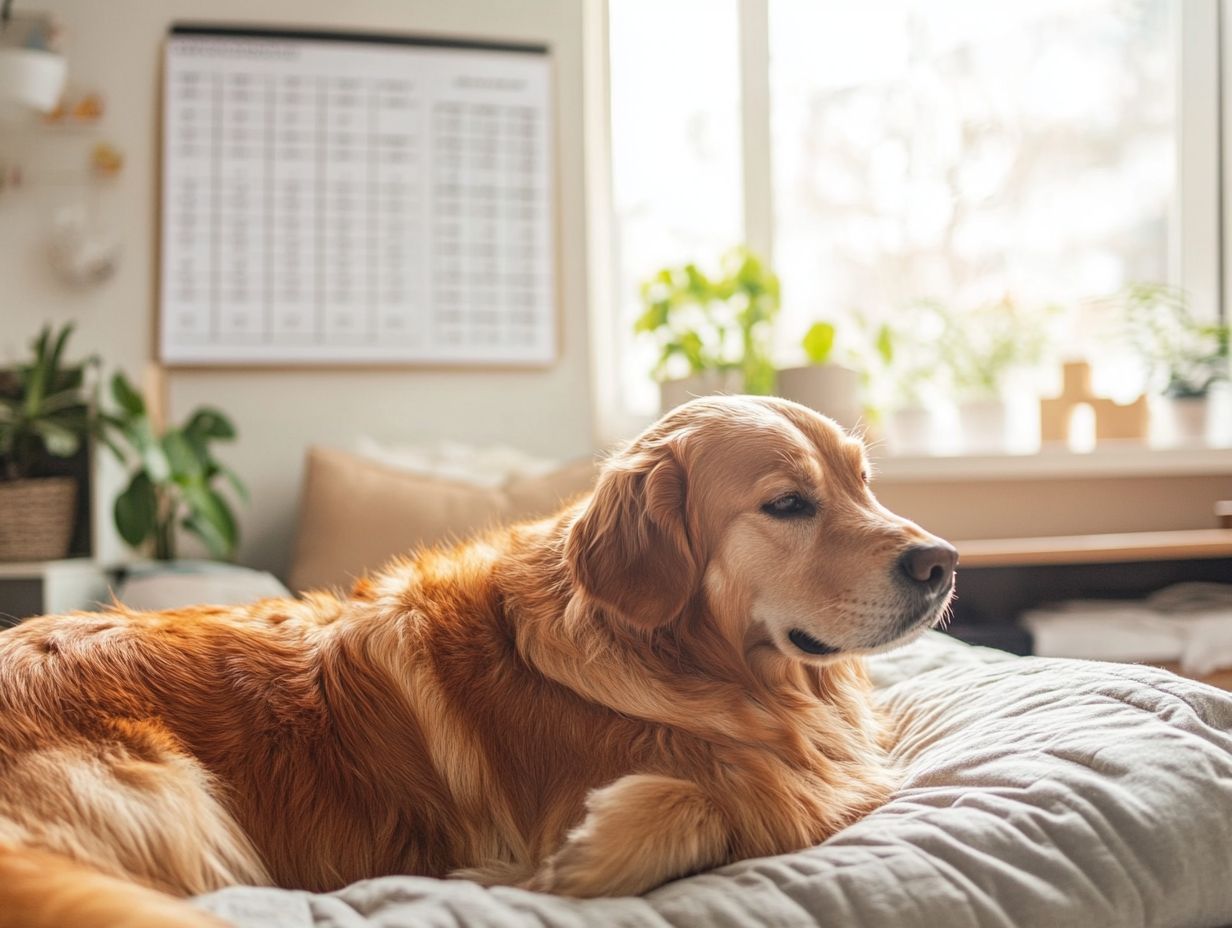
What is Pet Anxiety?
Pet anxiety, especially in dogs, involves various behavior problems caused by stressful situations, irregular routines, or lack of training. This condition can deeply affect their mental health and well-being.
Different breeds exhibit anxiety in unique ways. Factors like age and temperament play a role. Adult dogs may feel anxious due to changes in their routine, while older dogs might experience anxiety linked to physical discomfort or cognitive decline.
Common triggers include loud noises, unfamiliar people, separation from owners, or changes in the household. Recognizing these stressors is essential for effective training.
Defining and Identifying Symptoms
Look for signs of anxiety in your dog like excessive barking, destructive chewing, or changes in eating habits. These behaviors indicate stress or discomfort.
Symptoms can vary. Puppies might show anxiety through hyperactivity or clinginess. Adult dogs may reveal subtle signs, like restlessness. Senior dogs might become withdrawn as their health declines.
Establishing a structured routine helps dogs of all ages feel safer and more secure in their environment.
The Importance of Routine for Pet Anxiety Management
A consistent routine is key to managing your pet’s anxiety. It creates a structured environment that supports physical and mental well-being for both you and your pet.
A well-crafted daily routine not only alleviates anxiety but also enhances the quality time you spend together, creating a harmonious home.
How Routine Can Help Alleviate Anxiety
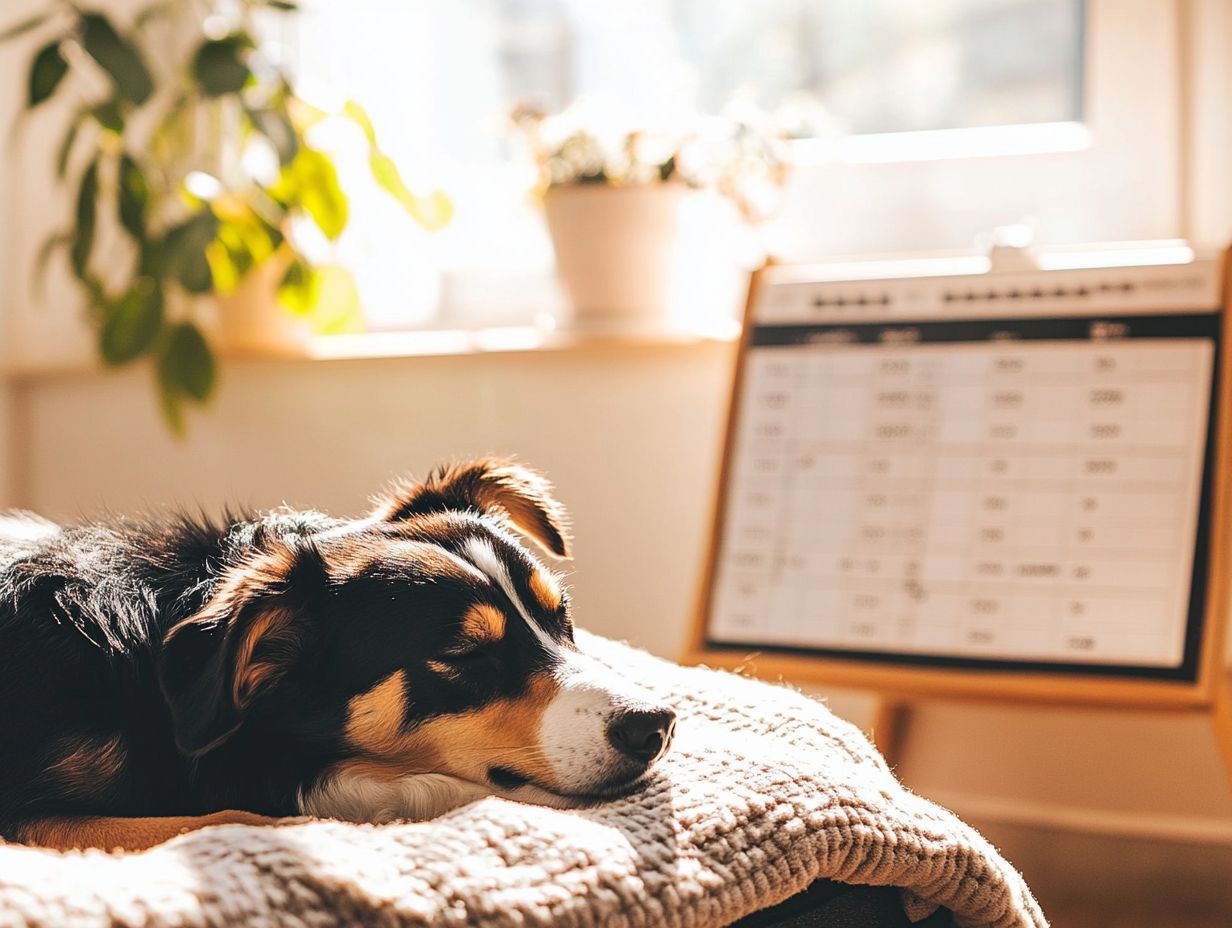
Regular routines can work wonders in easing your pet s anxiety. Predictability is essential for their emotional security and overall wellbeing.
Establishing a consistent daily schedule gives your dog stability. This allows them to navigate their environment with newfound confidence. By incorporating exercise like daily walks or engaging play sessions your pet can release pent-up energy that often leads to anxiety. For example, a high-energy breed might enjoy a structured morning jog followed by interactive play in the afternoon. In contrast, a smaller or less active dog could thrive with shorter, frequent walks along with puzzle toys.
Scheduled playtime is important for bonding with your pet. It encourages mental stimulation and reduces feelings of isolation, which can lead to stress.
Establishing a Routine for Your Pet
Creating a dependable routine for your pet requires thoughtful planning. Focus on their physical health and emotional needs to foster a secure environment for effective behavior change.
As a pet parent, consider essential elements like feeding times, exercise, and socialization opportunities. This will help you craft a structured routine that enhances your dog s overall wellbeing.
Tips for Creating a Consistent Schedule
Creating a consistent schedule for your pet takes planning, patience, and attention to their individual needs. This ensures that their daily routine aligns with their well-being and training goals!
Start by establishing regular feeding times, ideally sticking to the same hour each day. This creates a predictable schedule for your dog. Also, set aside specific times for potty breaks. This reinforces their training and minimizes indoor accidents.
Include daily walks and interactive play sessions at consistent intervals. This promotes both physical health and mental stimulation key factors for your dog’s happiness. A structured routine can significantly reduce anxiety, making your home a more peaceful place for both of you.
Consistent schedules also simplify behavioral management, helping your furry friend thrive in a balanced atmosphere.
Other Strategies for Managing Pet Anxiety
In addition to establishing a routine, several refined strategies can help manage pet anxiety and enhance your dog’s quality of life. Create a nurturing atmosphere where they feel secure and supported.
Techniques like behavior change, therapeutic interventions, and stress relief practices can greatly improve the wellbeing of both you and your pet, fostering a harmonious relationship and a calmer home.
Additional Techniques and Therapies
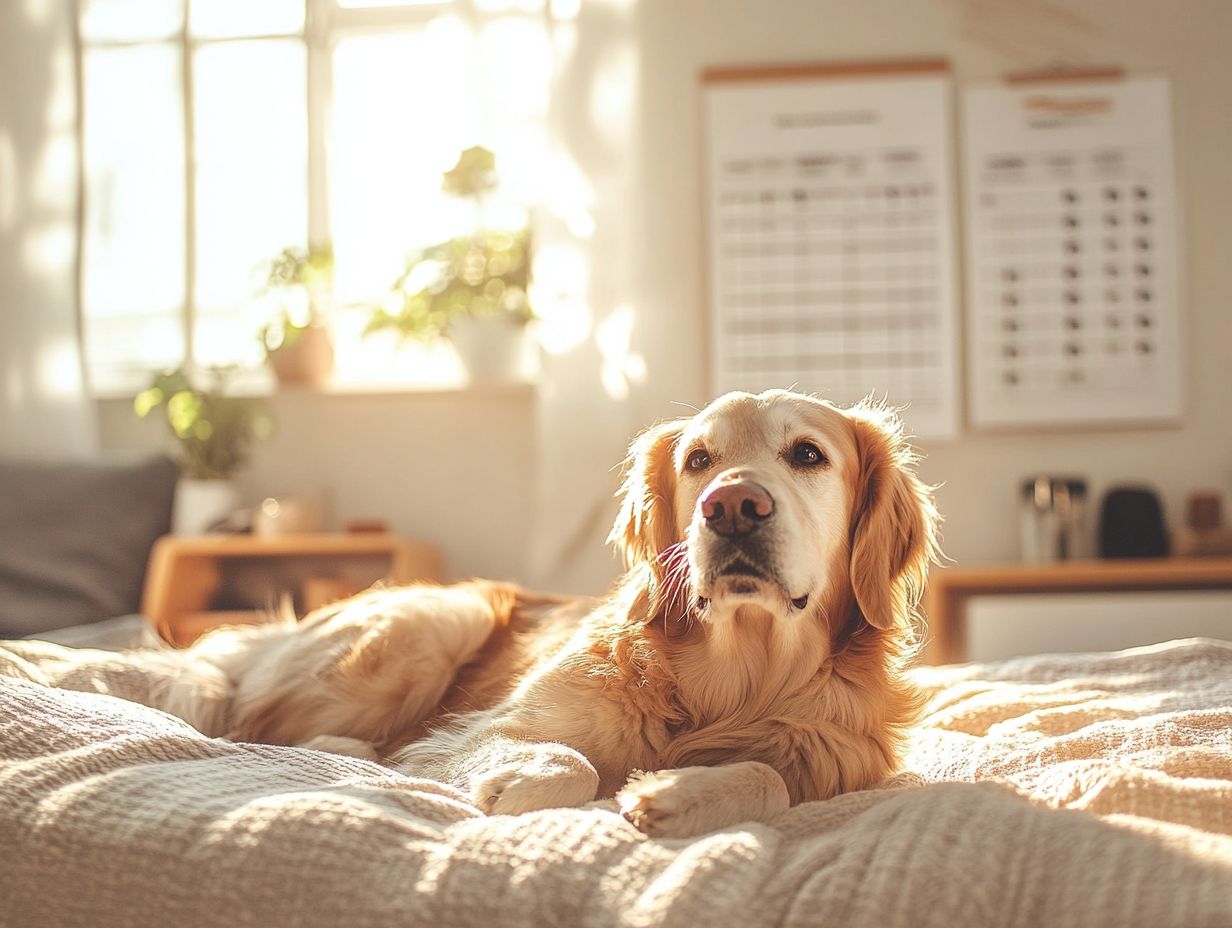
Consider additional techniques for managing your pet’s anxiety, such as behavioral therapies, environmental enrichment, and alternative treatments that fit into your dog’s routine.
Desensitization training, where your dog is gradually exposed to anxiety triggers, can help them adapt and cope more effectively. Aromatherapy with calming scents like lavender creates a soothing ambiance. Calming supplements, often infused with natural ingredients like valerian root or chamomile, can provide relief during particularly stressful moments.
When these methods are part of your established daily routine, they can enhance the effectiveness of your anxiety management strategies, leading to a more stable and content lifestyle for your furry companion.
When to Seek Professional Help
Understanding when to seek professional help for your pet s anxiety is essential. Certain signs may suggest that self-management strategies alone won t suffice for effective behavior modification.
As a pet parent, you need to be attentive to your dog s emotional state. Recognizing when a more specialized approach is necessary can lead to successful treatment.
Signs that Your Pet May Need Professional Support
Signs that your pet may need professional support for anxiety can show up in various ways. Look out for excessive barking, destructive behavior, or noticeable shifts in eating and drinking habits. These shifts often hint at a deeper psychological issue.
Your furry friend might exhibit excessive trembling, hiding, or even uncharacteristic aggression. These behaviors indicate they could be grappling with anxiety. Such symptoms create distress for your pet and can also impact your own emotional well-being.
Seeking professional support can be a game-changer! Trained experts help pinpoint specific triggers that cause your pet distress. They collaborate with you to create a customized behavior modification plan, using techniques like slowly getting your pet used to what scares them or providing mental stimulation. This partnership enhances the quality of life for both you and your beloved companion.
Frequently Asked Questions
What is the role of routine in pet anxiety management?
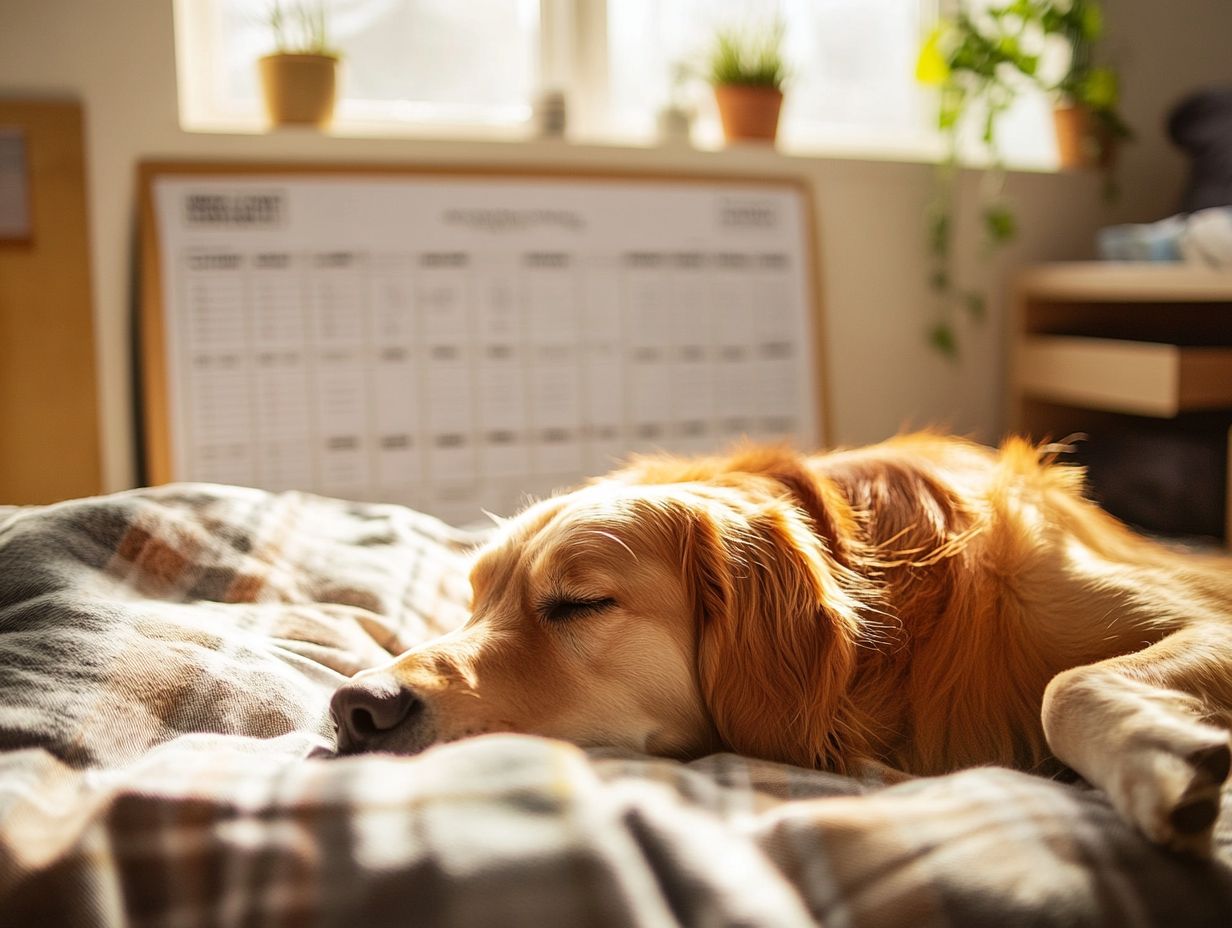
Establishing a routine is vital! It can significantly ease your pet s anxiety by providing predictability and stability.
How does establishing a routine help in managing pet anxiety and promote mental well-being?
Establishing a routine helps manage pet anxiety by creating a structured and consistent environment. This approach can make pets feel more secure and less anxious, as outlined in understanding the timeline of pet anxiety treatment.
Can a routine be helpful for all types of pets with anxiety, including puppies?
Yes, a routine can benefit all types of pets dealing with anxiety, including dogs, cats, and small animals like rabbits or birds.
What are some examples of routines that can help manage pet anxiety and enhance playtime benefits?
- Set a regular feeding schedule.
- Create a comfortable space for your pet.
- Include calming activities in their daily routines.
Why is sticking to a routine crucial for your pet s peace of mind?
Yes, it is essential to maintain a routine when managing pet anxiety, as consistency is key to helping your pet feel secure. Any changes to the routine should be introduced gradually.
Can a routine be combined with other anxiety management techniques for pets, such as those offered at The Ark Pet Spa and Hotel?
Absolutely! A routine can be combined with other anxiety management techniques, such as behavioral training or natural remedies, for more effective results.

